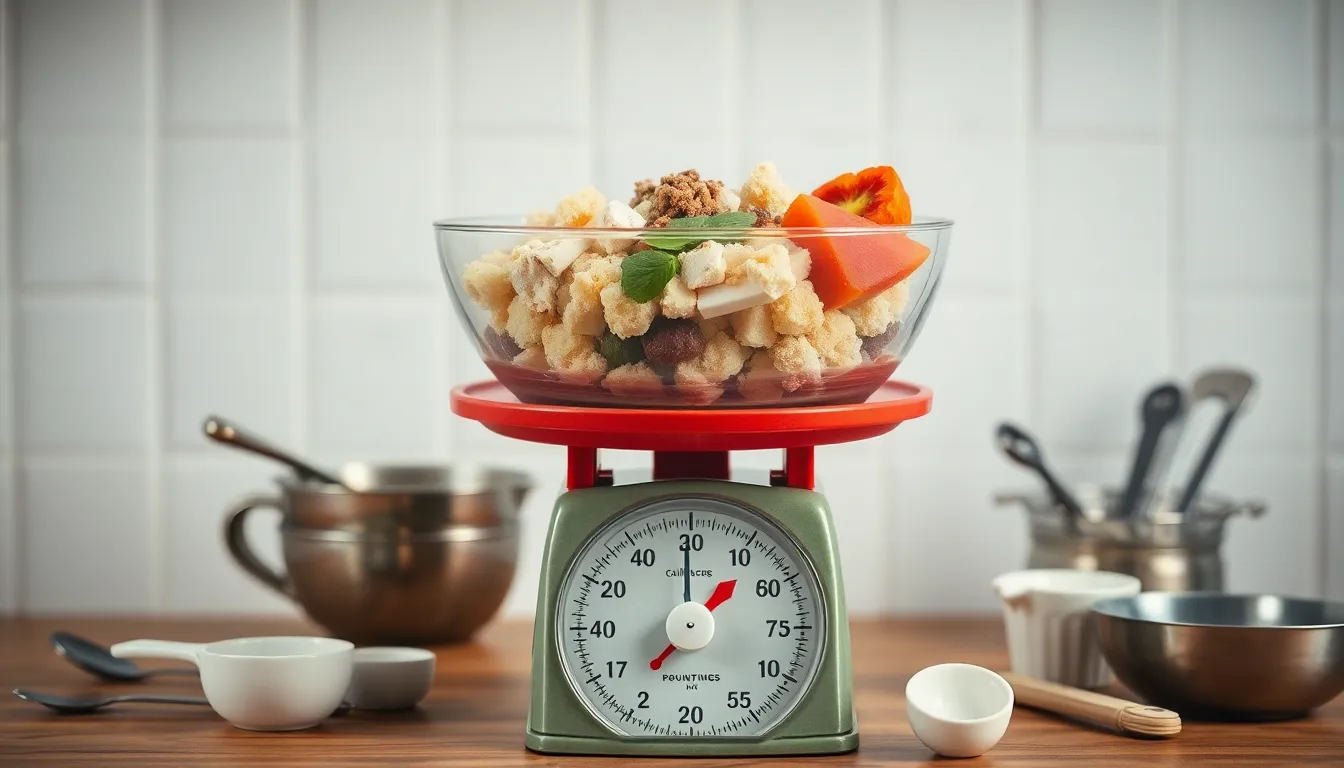Ever found yourself in a cooking conundrum, staring blankly at a recipe that calls for ounces when all you’ve got is a trusty old pound? You’re not alone. Understanding the relationship between ounces and pounds can feel like decoding ancient hieroglyphics, but fear not! It’s simpler than it sounds, and knowing this little nugget of information can save the day—or at least your dinner.
Table of Contents
ToggleUnderstanding Weight Measurements
Weight measurements often create confusion, especially when switching between ounces and pounds. A pound consists of 16 ounces, which means knowing how to convert between these units assists in precise cooking and baking.
Recipes frequently recommend ingredient amounts in ounces, particularly for liquids. This can cause challenges when a scale only provides measurements in pounds. Understanding this conversion simplifies ingredient preparation.
Measuring weight accurately impacts the final dish. A recipe that states 8 ounces of flour translates to half a pound. Using a kitchen scale helps ensure accuracy, providing confidence in the cooking process.
Additionally, other weight units exist, such as grams and kilograms. These may also come into play depending on the recipe. Converting ounces to grams involves multiplying by approximately 28.35 to achieve the desired measurement.
For quick reference, creating a conversion chart can prove beneficial. It streamlines the process when cooking or baking multiple recipes. Familiarizing oneself with common conversions builds efficiency in the kitchen.
Practicing these conversions frequently makes them second nature. Eventually, converting ounces to pounds or vice versa becomes instinctive. Clarity in weight measurements fosters a better culinary experience.
The Conversion Basics

Understanding the relationship between ounces and pounds helps in cooking and baking. A pound is a unit of weight commonly used in the United States.
Definition of a Pound
A pound, abbreviated as lb, equals 16 ounces. This unit originates from the Roman libra, which influenced its weight definition. It’s essential for measuring food and ingredients accurately in various recipes. The pound serves as a standard measurement, especially in the culinary field. Understanding this conversion ensures precise ingredient measurement, impacting taste and texture. For instance, 2 pounds equate to 32 ounces, illustrating how larger amounts translate into easier conversions.
Definition of an Ounce
An ounce, often abbreviated as oz, is a smaller unit of weight. One pound contains 16 ounces, making it vital in cooking and baking. Ounces measure both solid and liquid ingredients, providing flexibility in recipes. The fluid ounce, however, refers specifically to liquid volume, differentiating it from the weight ounce. Knowing this distinction aids in recipe execution, especially when using liquids. For example, 8 ounces of water equals 1 cup, demonstrating its practical application in kitchen settings. Each ounce represents a precise measurement, simplifying ingredient adjustments for various dish preparations.
How Many Ounces in a Pound
Understanding the relationship between ounces and pounds is crucial for accurate cooking and baking. A pound consists of 16 ounces, which serves as the standard conversion rate for these units of weight.
Standard Conversion Rate
The conversion rate remains constant, with 1 pound equaling 16 ounces in both solid and liquid measurements. This standard allows for easy calculation when recipes call for ounces. To convert pounds to ounces, multiplying the number of pounds by 16 provides the correct weight. For instance, 2 pounds equal 32 ounces when using this simple formula. Recognizing this conversion helps when adjusting ingredient amounts for larger batches or scaling down recipes. This knowledge proves essential when precision is required for successful outcomes in cooking.
Examples of Conversion
Practical examples illustrate the application of this conversion. An 8-ounce serving of cheese represents half a pound, showing how weight can affect food preparation. In another example, 4 ounces of sugar convert to a quarter pound, simplifying measurements for desserts. Utilizing a kitchen scale helps visualize these conversions, turning complex tasks into straightforward steps. 16 ounces of broth equates to 1 pound, enhancing accuracy in soup recipes. Each example underscores the role of ounces in everyday cooking, reinforcing the importance of mastering these conversions for successful culinary endeavors.
Practical Applications
Understanding ounces and pounds aids in accurate cooking and baking. Mastery of these measurements ensures successful recipe execution.
Cooking and Baking
Recipes often list ingredients in ounces, making it crucial for cooks to convert weights accurately. For instance, if a cake calls for 12 ounces of sugar, recognizing this translates to 0.75 pounds simplifies ingredient preparation. Chefs can avoid mishaps by using the conversion of 16 ounces equal to 1 pound. Accurate measurements impact flavor and texture, where 10 ounces of melted chocolate represents 0.625 pounds. Moreover, precise ratios in baking can make all the difference when creating delicate pastries or structured breads.
Dietary Considerations
Dietary guidelines frequently use ounces to specify portion sizes. Individuals monitoring their intake might find it beneficial to understand these conversions. For example, a serving of protein could be 3 ounces, equating to 0.1875 pounds. Recognizing portion sizes helps maintain a balanced diet without overshooting caloric limits. Customary measurements like tracking fluid ounces in drinks also assist in hydration goals, where 8 fluid ounces equals 1 cup. Clear knowledge of these conversions supports healthier lifestyle choices.
Mastering the conversion between ounces and pounds is essential for anyone who enjoys cooking or baking. Knowing that one pound equals 16 ounces simplifies the process of measuring ingredients accurately. This understanding not only enhances the final dish’s taste and texture but also boosts confidence in the kitchen.
Creating a conversion chart can serve as a handy tool for quick reference. With practice and familiarity, anyone can navigate these measurements effortlessly. Ultimately, this knowledge empowers individuals to follow recipes accurately and make informed dietary choices. Embracing these conversions leads to a more enjoyable and successful culinary experience.







